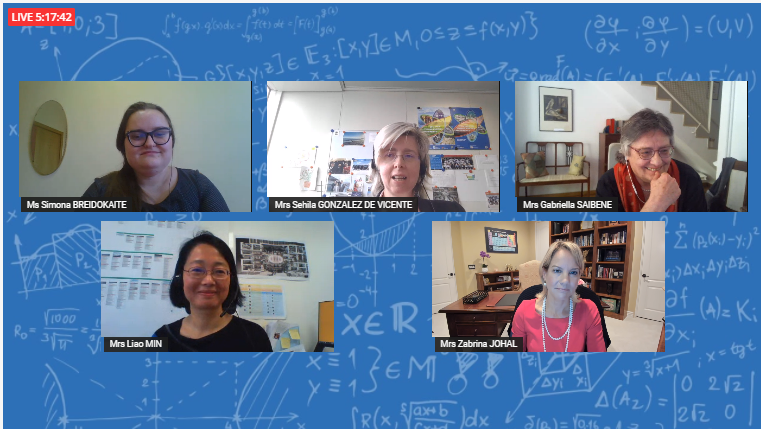Women in Fusion Event during FEC2020 provides honest views and concrete proposals to improve gender equity in fusion
According to UNESCO Institute for Statistics (UIS) in STEM (science, technology, engineering, maths), women account for less than 30%. The percentage in nuclear physics and nuclear engineering, including fusion science and technology, is even lower. In more than 30 years, much work was done to reach gender equality, but progress is too slow, and that has to change.
Women in Fusion Side Event, was held on Wednesday 12 May during the IAEA FEC2020 virtual conference. A group of women panellists, ranging from the highly experienced to newly coined PhDs, were gathered together by Sheila M. Gonzalez de Vicente (Nuclear Fusion Physicist at the IAEA). Five panellists: Gabriella Saibene (Head of Unit for Antennas and Plasma Engineering at Fusion for Energy), Liao Min (Section Leader in Magnets at the ITER Organization), Zabrina Johal (Strategic Development Executive at General Atomics), and Sheila Gonzalez de Vicente (Nuclear Fusion Physicist at the IAEA) and Simona Breidokaite (Ph.D. Student in Fusion at the Lithuanian Energy Institute) discussed the challenges of having a successful career in nuclear physics and nuclear engineering, a mainly male-dominated field. In some parts of their jobs, all participants were only women in the team.
The youngest panellist Simona Breidokaite said that she has not faced any challenges being a woman in the workplace at this moment of her career, but she still thinks that she can face it in the future. Now her main goal is to further learn from more experienced male coworkers. Other panellists said they had faced some issues being women in the nuclear fusion field in their careers. Gabriella Saibene mentioned linguistic problems that she has experienced throughout her career, “when a woman is assertive, she is bossy. If she is self-assured, she is called pushy.” Zabrina Johal said that she becomes the first female officer onboard a guided-missile destroyer. Her male colleagues were offered gender bias sensitivity training, but she was not invited to attend. She felt as if she were still a part of the problem rather than a part of the solution.
The event also covered the discussions about young female scientists changing their careers for family, children, and their issues with male colleagues. Gabriella Saibene said: “It is important to recognize the huge investment that is put in a person to get a PhD in Material Science or whatever discipline to reach a professional level and be productive. We need to protect this investment, don’t waste it!”. All the panellists agreed that there is a need for a mentoring system and some network for young girls who face gender-based challenges. As Min Liao said: “We need to do better to develop a workforce pipeline and fix the leaks.” She is trying to create a gender-neutral team.
The female role models are necessary for STEM fields because they can show young women that there is an opportunity for them to reach career developments, and that there are not anymore just males in science. Not only panellists but also the audience agreed that females need to help each other – and that this is just the beginning. There is still much work to do to build a network and reach all female workers. Creating a mentorship and networking mechanism is the next step needed to speed up the progress in this exciting and demanding field.

Simona Breidokaitė
Lithuanian Energy Institute
Simona.Breidokaite@lei.lt